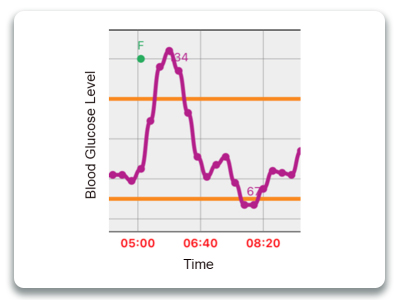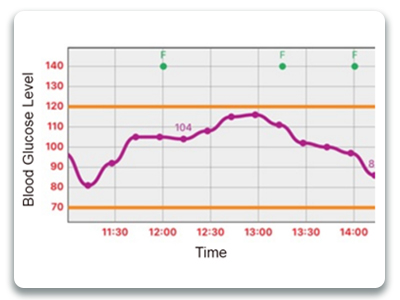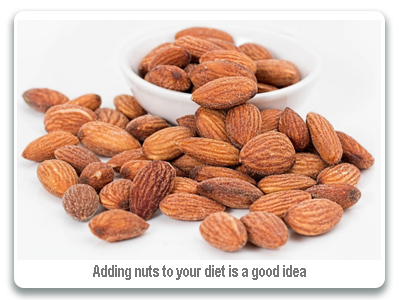Cardiovascular diseases in women on the occasion of International Women's Day at KEM Hospital
Date: 08/03/2018On the occasion of International Women's Day, let us take a look into the leading health concern of today's multi-tasking women.
ASCVD (Atherosclerotic cardiovascular diseases) including heart attacks and strokes remains the leading cause of mortality in Women. It was a past belief that women are not affected by heart attacks as often as men. This is no more true as women from 20 - 40 years of age are being affected. Rising cholesterol levels are a leading cause of the same and regular cholesterol testing with help from a clinician should form a part of the management. Ever rising epidemic of psychosocial stress, diabetes, hypertension, smoking and drinking too much alcohol further contributes to this risk. Poor lifestyles and eating habits lead to increase in weight.
Metabolic Syndrome is a conglomerate of abdominal obesity, hypertension, diabetes, low HDL (High Density Cholesterol) levels and high triglyceride levels. It is associated with heart problems and infertility.
Women with Polycystic Ovarian Disease are at increased risk for metabolic syndrome, diabetes mellitus and complications of pregnancy. Insulin resistance in this group is associated with derangement in cholesterol values.
Women experience a number of hormonal changes – beginning from puberty, through pregnancy and up to menopause. After menopause, women have increased levels of LDL (Low Density Cholesterol - bad cholesterol), total cholesterol and drop in the HDL (High Density Cholesterol - good cholesterol) as compared to the premenopausal women. A steady rise of cholesterol levels occurs throughout pregnancy.
Contraceptive pills are associated with disturbances in cholesterol levels and risk of thrombotic episodes.
Nutritional problems and infections are a cause of concern in a certain social strata in the society. Breast Cancer, infertility, skin & bone health, depression, etc are other causes of concern in women but the leader continues to be atherosclerotic cardiovascular diseases.
The Impact of Carbohydrates on Metabolic Health
As an integral part of my day job, I meet a lot of patients every day. I look after patients who predominantly have metabolic health issues. In my earnest endeavour to help them identify the root cause of their problems, I tend to speak to my patients a lot to find out more about their lifestyles. Each individual is different and they all have diverse food habits and ways of living. Yet, they all exhibit one thing in common – metabolic health issues.
As an integral part of my day job, I meet a lot of patients every day. I look after patients who predominantly have metabolic health issues. In my earnest endeavour to help them identify the root cause of their problems, I tend to speak to my patients a lot to find out more about their lifestyles. Each individual is different and they all have diverse food habits and ways of living. Yet, they all exhibit one thing in common – metabolic health issues.
Most days I have one of these conversations with my patients in the consulting room:
- You need to work on your weight issues”, I tell the patient, encouragingly. The patient typically responds that he has been avoiding most kinds of oil and ghee while exercising regularly. But, this doesn"t seem to add up, as the weighing scale has barely changed. Digging deeper, I find out that during all the 2-3 meals of the day, he/she indulges in a predominantly carbohydrate-rich diet with 2 rotis/ bhakri/ rice with a bare minimum quantity of vegetables and proteins.
- Your blood glucose and weight needs to be looked into”, I tell another, with concern. The patient claims that he has just one meal in the day. However, it is a single large meal dominated by 3 rotis/ bhakris and a moderate helping of rice and small amounts of veggies and dal.
- A third patient tells me that he/she eats 2 meals with a single roti for each meal. However, on prodding, I generally discover that the person consumes nearly 8-10 cups of tea with 2 spoons of sugar/ cup daily.
In all these 3 scenarios, the consumption of carbohydrates is predominantly high. Although these patients think that their food consumption is well under control, they erroneously believe that they are eating healthy. They have fallen into the classic carbohydrates trap, due to which all their efforts to lose weight and control blood glucose levels end up in failure. Eventually, such patients will naturally end up demoralized and quit.
Let me attempt to explain to you the structure and function of carbs and how they affect our health. As you read, you will understand the difference between the sharp spikes of simple sugars and gradual spikes of complex sugars.
What is the classification of carbohydrates based on structure?
The fundamental unit of a carbohydrate is Monosaccharide. Examples of these include glucose and fructose. Now, disaccharide contains two monosaccharides. Examples of these can be sucrose or lactose.
Next, we have an Oligosaccharide. This is a short chain that contains 3-10 monosaccharides. Can you see how their complexity is increasing? Lastly, we have Polysaccharides, which are long chains of monosaccharides.
What are the Types of Carbohydrates?
As I have explained above, #Simple Carbohydrates" consist of 1-2 sugars (monosaccharides or disaccharides) combined chemically. These are quick sources of energy and are easily metabolised, causing a rapid rise in blood sugar and insulin release from the pancreas. I am sure you may have heard of fructose, lactose and glucose. These are great examples of simple carbohydrates. We encounter them every day. These are found in foods like candy, carbonated beverages, corn syrup, fruit juice, honey and of course, table sugar, which many people believe is the only culprit.
The figure below shows a sharp spike in blood glucose after a cup of tea with sugar.

Complex Carbohydrates, on the other hand, has 3 or more sugars (oligosaccharides or polysaccharides) bonded together in a more complex chemical structure. These take a longer time to digest and have a more gradual effect on the increase in our blood sugar. These are found in foods like apples, unrefined whole grains, brown rice, spinach, lentils, and broccoli.
The figure below shows a gradual rise and fall in blood glucose after eating an apple.

But what about starches? Many of us are used to consuming starchy foods as a part of our diet. Under what category do these fall? Starches are complex carbohydrates that contain a large number of glucose molecules. A common example of a popular food that contains starches is the potato. Did you know that the potato was never native to India, and was first introduced to our country by the Portuguese? In fact, #Batata" is a Portuguese word that we adopted into our language. Chickpeas and pasta are other examples of starchy foods that are popular and many of us consume these at home.
Lastly, we come to fibrous foods. These are non-digestible complex carbohydrates that add bulk and ease defecation. Some examples are bran (Oat and Wheat Bran), seeds (like Flax Seeds or Chia Seeds), vegetables, fleshy fruit, oats, broccoli, and dried beans.
The metabolism of carbohydrates
Every morning we rise and go about our daily activities. Every day we consume food and beverages. But, we never think about how our body processes foods. Many are not even aware of what the process entails. The carbohydrates we consume are metabolised to glucose in our blood. A rise in the blood glucose level stimulates insulin secretion from the pancreas and the uptake of glucose by the muscles for energy and the liver. When the blood glucose level falls, glucose is released by the liver in the bloodstream following the release of glucagon by the pancreas.
Now, simple sugars have a detrimental effect on our body caused by an illusionary response. Let us see how. The consumption of simple sugars results in a quick rise and fall of blood glucose. As the blood glucose starts to fall, the brain receives a signal. Therefore, people feel hungry quicker as the blood glucose starts falling. This is followed by a rampant behaviour of overeating or repeated indulgence to counteract the symptoms.
On the other hand, complex carbohydrates take a longer time to digest and hence blood glucose levels are maintained for a longer time. Hence, satiety lasts for a longer time. So, one of the strategies to break the vicious cycle of over-consumption could be to introduce more complex carbohydrates into our diet.
How do carbohydrates impact our health?
Our wonderful cuisine is laden with sumptuous foods and great taste, but all of it isn"t necessarily good for us. Consumption of simple carbohydrates amongst Indians is very high. Most meals comprise nearly 70-80% carbs. For breakfast, we are quite used to eating poha, upma, idli, dosa, paratha, sandwiches, rolled oats, etc. This carb-fest is generally followed by a cup of sugar-laden tea and biscuits. Lunch and dinners include 2-3 rotis and a good helping of rice with vegetables hidden in some corner of the plate. The snacks we love so much like pav bhaji, chole bhatura, samosas, pakoras, Indian sweets - are all loaded with refined grains or refined sugar. These meals are lacking in fibres and proteins.

There is compelling evidence to suggest that excess carbohydrate intake is associated with worsening of metabolic health - insulin resistance, prediabetes, diabetes, complications of diabetes, increase in visceral fat, dyslipidemia, polycystic ovarian disease and cardiovascular disorders.
It"s not just the quantity of carbohydrates that we consume, it"s the quality. These 'bad carbs' such as refined cereals, white bread, sugar-sweetened drinks or fruit juices, etc. should be restricted and consumed only in moderation, if at all. These should then be replaced by the 'good carbs' such as whole grains, legumes, vegetables, whole fruits, nuts and seeds. This is a paradigm shift in food consumption and needs to be encouraged in the interests of avoiding the vagaries of metabolic diseases.
There are 2 types of Lipids - cholesterol and triglycerides.
Nearly 80-90% of cholesterol is synthesised by the liver. Lifestyle does not have a significant impact on LDL cholesterol (the bad cholesterol). The levels of triglycerides are decided by external factors like diet, exercise, weight, alcohol, diabetes, thyroid issues, etc. Excessive carbohydrate intake in our diet (more than 60%), leads to an increase in triglyceride production by the liver which contributes to excess VLDL in the circulation. This is inversely related to HDL cholesterol (the good cholesterol) and is associated with cardiovascular disorders. Lifestyle modifications can bring about reductions in triglycerides by up to 50%. Triglycerides are very responsive to weight loss, regular exercise and dietary changes.
Conclusion
Ultimately, moderation holds the key. When we switch to a well-balanced diet and practice moderation in what we eat, we are on the right track. This is the key to a healthy diet. Although recommendations mention 45-65 % of calorific intake should be carbohydrates, reducing the intake of carbohydrates to around 40% may contribute to the improvement of metabolic health. Complex carbohydrates should be preferred to simple carbohydrates. In this era of modernisation and gadgets, probably personalisation of diet based on the glucose response to various foods may be an answer. Herein, lies the role of CGM (Continuous Glucose Monitoring).
A Continuous Glucose Monitoring system (CGM) can be beneficial for the management of metabolic health issues. The system includes a small sensor that is attached to your skin (usually the back of the arm). This device is capable of reading your blood glucose value every 15 minutes, generating 96 data points in 24 hours. CGM sensors are an efficient way to measure blood glucose fluctuations. It is far more comprehensive and efficient than capturing a single reading at a point in time through a blood analysis in the laboratory. Even the glucometer doesn"t come close as it can only capture a limited no of readings during the day that is initiated by the patient. I certainly believe that studies of glucose variability can provide greater insight into the prevention and management of metabolic health conditions.
